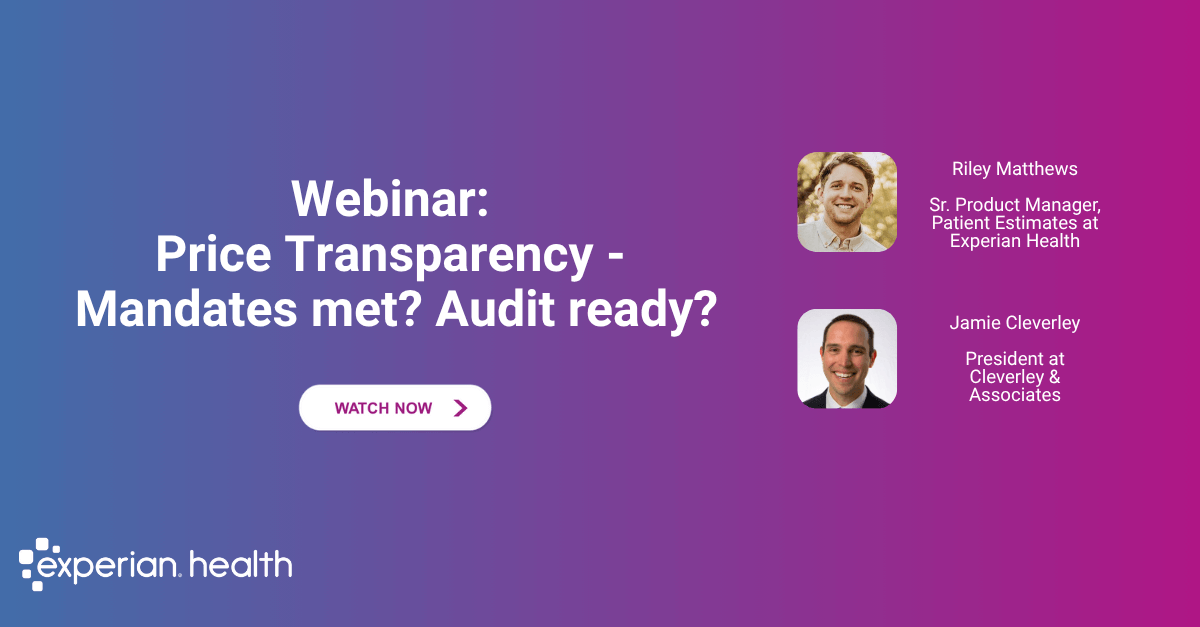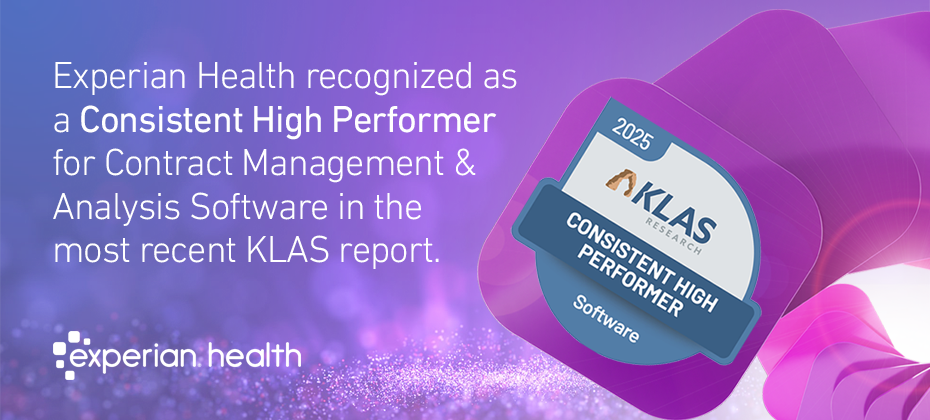
Highlights:
- Transparent pricing puts the patient in control of their healthcare and financial decisions. However, many providers don’t have the right tools to provide accurate, upfront estimates.
- The February 2025 executive order put added pressure on hospitals to comply with new healthcare regulations and deliver proof of meeting new compliance standards.
- Price transparency solutions help providers provide solid estimates, reliable delivery and reporting that stands up to scrutiny.
While price transparency in healthcare has improved, it still needs some work. According to the latest Experian Health data, 88% of providers say there’s an urgency to improve or implement accurate estimates. Along with the Hospital Price Transparency rule (CMS-1717-F2) that took effect in January 2025, providers are also feeling the heat from a newly signed executive order aimed at strengthening regulations around hospital price transparency—and must take swift action to get compliant.
While the full impact of the new executive order is still being defined, now is the time for healthcare organizations to double down on meeting existing price transparency requirements—and get audit-ready. Leveraging price transparency solutions can help hospitals meet regulatory mandates, improve the patient financial experience and keep revenue cycles on track.
What is healthcare price transparency?
Healthcare price transparency is the practice of providing clear, upfront information to patients about the cost of medical care, including services, tests and prescriptions.
In February, the U.S. President signed an executive order aimed at strengthening the enforcement of hospital price transparency. By May 26, 2025, three federal departments—Health and Human Services, Labor, and Treasury—must take action to:
- Require hospitals and health plans to post actual prices for items and services (not estimates)
- Ensure price data is standardized and easy to compare across providers and plans
- Improve enforcement and compliance through updated guidance or proposed rules
These changes are designed to make healthcare pricing clearer and more accessible for patients and build on two existing regulations, the Hospital Price Transparency Rule and the No Surprises Act.
The Hospital Price Transparency Rule aims to provide consumers with easy-to-understand information about hospital pricing, empowering patients to make informed choices about their healthcare. In addition, the No Surprises Act offers patients protection from surprise billing when certain emergency and non-emergency services are received from out-of-network providers at in-network facilities.
Why healthcare cost transparency matters to patients
Patients want to understand the true cost of care, with 38% of patients saying that understanding the cost of care in advance of treatment made for a better payment experience. Yet, according to The State of Patient Access 2025, 56% of patients say they struggle to understand what their insurance covers without help from their provider.
Patients also want more accurate estimates. However, despite increases in patients receiving estimates, accuracy has unfortunately gone down for the third consecutive year. Without an estimate before treatment, patients are left uncertain about how much they’ll owe and are likely to postpone or cancel care.
How cost transparency in healthcare improves patient decision-making
The patient financial journey can be daunting, especially as healthcare costs continue to rise. Today’s patients crave improved access to understand how much care will cost, check their budget and figure out if they can afford the cost. They often also want to know the cost ahead of time to compare costs, have time to save up for the bill or explore payment options.
Cost transparency puts patients in the driver’s seat. When providers send accurate, transparent patient estimates upfront, patients are empowered to make more informed healthcare and financial decisions. Patients also want to understand their financial responsibility after insurance, with 77% of patients saying it’s important that their provider be able to explain what their insurance covers before treatment.
Additionally, 81% of patients also report that accurate estimates help them better prepare to pay their medical bills. This can lead to patients getting the care they need instead of putting it off due to unknown costs.
Benefits of hospital price transparency for providers
Non-compliance with price transparency regulations can lead to penalties and public notices that impact your reputation. With the passing of the new executive order, the Centers for Medicare & Medicaid Services (CMS) is ramping up enforcement of price transparency regulations. In the first two months of 2025 alone, more actions were taken than in all of 2024.
Healthcare organizations with price transparency tools in place will be in a strong position to meet current regulations and whatever comes next.
Price transparency also comes with financial benefits, like an increased chance for prompt patient payments, which can help keep revenue cycles on track. According to Experian Health data, 38% of patients report that understanding the cost of care before treatment made for a better payment experience. When patients can pay their bills in full or through a payment plan, providers spend less time chasing collections. More on-time collections help providers maximize revenue, avoid revenue leaks and minimize the potential for bad debt.
The role of price transparency tools in the healthcare system
Regulatory requirements around price transparency are rapidly evolving. Price transparency tools help hospitals stay compliant, improve the patient financial experience and reduce administrative burden for busy staff.
Tools like the Patient Estimates from Experian Health and Cleverly + Associates offer the following benefits:
- More accurate estimates: Experian Health’s Patient Estimates solution generates real-time estimates using the most up-to-date payer contracts, fee schedules and historical claim data.
- Audit protection: Patient Estimates includes four built-in reports to align estimates with actuals, track collections, and prove compliance, so hospitals are always audit-ready.
- Improved workflows: Efficient solutions that streamline estimate delivery, reduce estimate errors and easily scale to replace time-consuming manual processes and disjointed delivery systems.
- Improved patient access to estimates: A self-service portal allows patients to conveniently access personalized estimates. Hospitals can also use complementary tools, like Patient Financial Advisor, to text estimates to patients or download an estimate PDF in-office. With this solution, some clients have reported a direct correlation between automated estimate delivery and collections increases by nearly 133%.
Moving toward a more transparent healthcare future with Experian Health
Experian Health is committed to developing solutions that strengthen price transparency in healthcare. Through a partnership with Cleverley + Associates, Experian Health is making it simpler for hospitals to be in compliance with price transparency regulations and help patients understand the cost of care.
Learn how price transparency solutions from Experian Health and Cleverley + Associates can help healthcare organizations stay compliant with current regulations and help patients better understand their costs.



